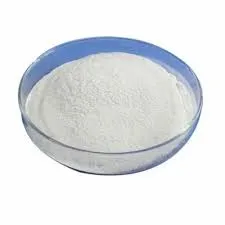
aug . 18, 2024 02:56 Back to list
HPMC-Based Tile Adhesive for Enhanced Bonding and Durability in Construction Applications
HPMC Tile Adhesive A Comprehensive Guide
In the ever-evolving world of construction and architecture, tile adhesion has become a critical component in ensuring lasting durability and aesthetic appeal in various installations. One key material that has gained significant popularity in recent years is Hydroxypropyl Methylcellulose (HPMC). This versatile polymer plays a pivotal role in formulating tile adhesives, which are essential for bonding tiles to various substrates, ensuring that installations not only look good but also stand the test of time.
What is HPMC?
Hydroxypropyl Methylcellulose (HPMC) is a non-ionic cellulose ether derived from natural cellulose. It is widely used in construction due to its unique properties, which include water retention, improved workability, and resistance to sagging. HPMC is produced through a chemical modification of cellulose, which makes it soluble in water and imparts a range of beneficial characteristics that are indispensable in tile adhesive formulations.
The Role of HPMC in Tile Adhesives
1. Water Retention One of the most significant advantages of HPMC is its ability to retain water. In the context of tile adhesion, the moisture retained by HPMC allows for better bonding between the adhesive and the tile, as well as between the adhesive and the substrate. This property is crucial in preventing premature drying, which can lead to weak bonds and, ultimately, tile failure.
2. Enhanced Workability HPMC enhances the workability of tile adhesives, making them easier to spread and manipulate during application. This characteristic allows contractors to achieve a smooth, even application, which is vital for ensuring that tiles are precisely aligned and firmly attached to the substrate.
3. Anti-Sagging Properties For wall tile installations, anti-sagging properties are of utmost importance. HPMC contributes to the structural integrity of the adhesive, preventing tiles from slipping or sliding down the wall after application. This feature is particularly beneficial when dealing with larger tiles that may be heavier and more prone to sagging.
hpmc tile adhesive

4. Modification of Setting Times By controlling the amount of HPMC in the formulation, manufacturers can adjust the setting times of tile adhesives. This flexibility allows construction professionals to work at their own pace, accommodating various project timelines.
Applications of HPMC Tile Adhesives
HPMC-based tile adhesives are suitable for a wide range of applications, including ceramic tiles, porcelain tiles, glass tiles, and even natural stone. They can be used on various substrates, such as concrete, cement boards, and gypsum surfaces. Moreover, HPMC tile adhesives can be employed in both interior and exterior applications, making them versatile for different construction environments.
Advantages of Using HPMC Tile Adhesives
- Increased Durability The combination of HPMC's properties leads to stronger, longer-lasting tile installations that resist cracking, chipping, and water damage. - Environmental Friendliness HPMC is derived from natural cellulose, making it an environmentally friendly choice compared to some synthetic alternatives. - Versatile Formulations Manufacturers can customize HPMC tile adhesives to meet specific project requirements, enhancing their performance in various conditions.
Conclusion
In summary, HPMC tile adhesive is an essential component in modern construction, offering numerous benefits that lead to superior tile installations. Its excellent water retention, enhanced workability, anti-sagging properties, and adaptability in setting times make it a preferred choice among contractors and builders. As the construction industry continues to prioritize quality and durability, HPMC-based adhesives are likely to remain at the forefront of tile installation technologies, ensuring that both aesthetic and functional needs are met efficiently and effectively.
-
What Is HPMC: Meaning,Applications
NewsApr.02,2025
-
Redispersible Polymer Powder (Rdp): Uses, Price, And Suppliers
NewsApr.02,2025
-
Hydroxyethyl Cellulose (Hec): Uses, Suppliers, And Buying Guide
NewsApr.02,2025
-
Hpmc (Hydroxypropyl Methylcellulose): Applications, Suppliers, And Buying Guide
NewsApr.02,2025
-
Guide to Mortar Bonding Agent
NewsApr.02,2025
-
Buying Guide to Redispersible Powder
NewsApr.02,2025







